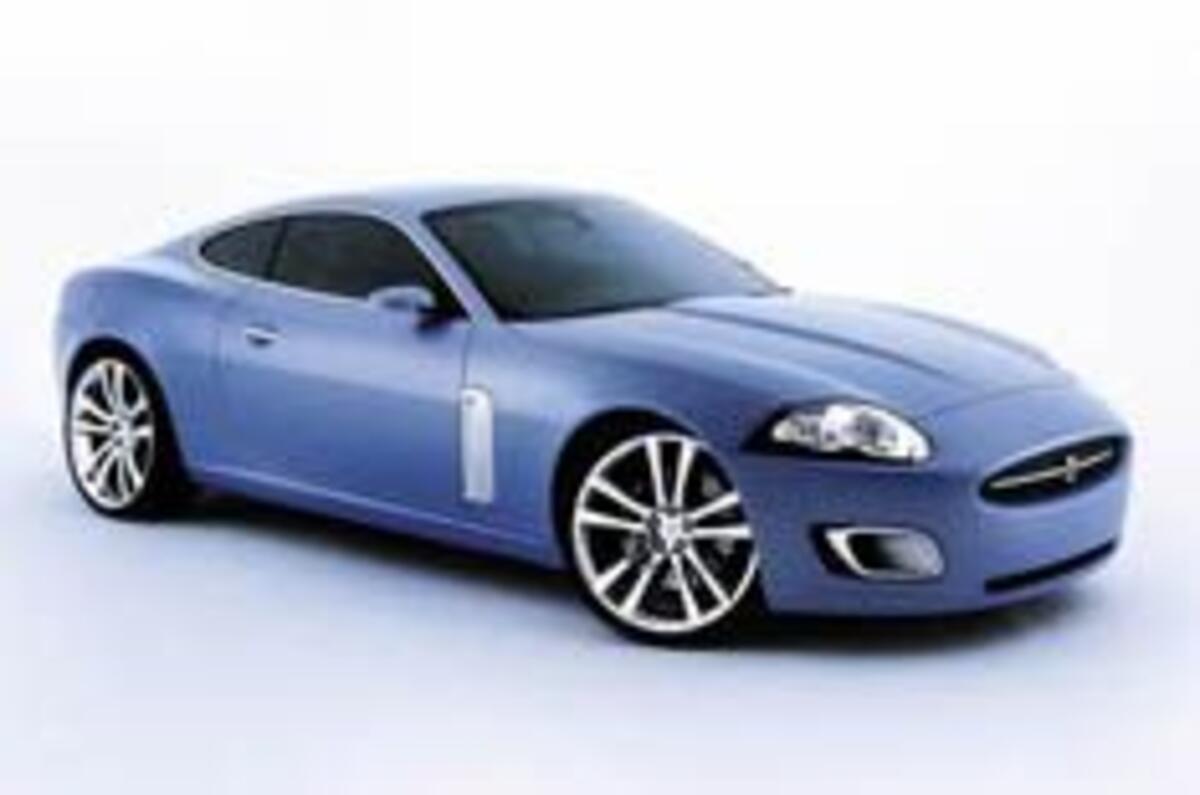Jaguar has revealed the muscular shape of its new XK8 sports car, with this handsome new concept at the Detroit motor show. Called the Advanced Lightweight Coupé (ALC), the concept is about 80 per cent representative of the new XK, on sale in January 2006, and differs only slightly in some dimensions and design details.
‘When you see the new XK, you’ll see a clear link between the two,’ said senior design manager Giles Taylor, responsible for both this concept and the production XK.
The new XK will have classic coupé proportions, with a long bonnet and swept-back windscreen ahead of a teardrop-shaped cabin, and featuring a sharply-raked rear three-quarter. Inside is an all-new fascia.
Although this concept was an engineering mock-up, the production car is known to feature a version of the XJ’s riveted alloy body and its wishbone front and multi-link rear suspension. In the metal, the concept appears significantly different to today’s XK, yet still sensibly restrained for a market that generally has conservative tastes. Next to a BMW M6, Mercedes SL or Porsche 911, the XK will look elegant and mature, albeit much tougher than today’s model.
‘This is Jaguar design moving on as it should do,’ said Ian Callum, Jaguar’s chief of design. ‘The new look is about power and elegance using clear, pure surfaces. Look at all our great cars in the past and they were muscular and taut, as well as subtle and curvaceous.’
A few millimetres longer than today’s 4.76m XK8, the D C concept and new XK share a much longer (by 162mm) 2750m wheelbase. This pushes the wheels to each corner; with a wider stance (1900mm compared to 1830mm) but similar height (1300mm) this gives a more squat appearance.
With the new styling, the extra body creases and more pronounced haunch over the rear axle, the ALC shows how the new XK8 will be more aggressive and sportier than today’s car. This style will transfer to the next-generation of Jags, starting with the new S-type in 2007, and all designed by Ian Callum.
Perhaps the most significant feature of the ALC concept is its ground-hugging stance and tight clearances between the tyres and wheelarches, a styling characteristic that has escaped previous Jag models. However, designers and engineers are still battling to keep this look for production.
For example, the front bumper has a tight, nine-degree ramp angle. That’s comparable with the German competition, whose cars sit lower than Jaguar’s. In the past this visual element has been compromised in Jaguar cars to avoid scraping the bumper over speed bumps and car park ramps. ‘We’re working as best we can to keep the wheels and tyres tight in the arches,’ said Phil Hodgkinson, Jaguar’s product engineering boss.
Surprisingly, the classically-proportioned coupé drew some criticism from rival designers as too conservative and derivative of Aston Martin’s latest offerings. ‘We’re flattered to be likened to Aston Martin,’ said Jaguar chairman Joe Greenwell. ‘This concept is totally consistent with Jaguar GT sportscar designs down the decades. But we need to move on, having been a bit too conservative in the past.’
The most radical of the design features are the headlights, which wrap around the nose with a dramatic sweep and finish in a sharp corner in front of the wheelarch. They are very modern and a long way from Jaguar’s traditional twin round headlamps. They also become the focus for prominent power bulges along the edge of the bonnet. The higher-than-usual front grille has been forced on Jaguar by forthcoming pedestrian impact legislation, but it retains the hallmark ‘E-type’ oval opening.
The production XK will mark a return to a hatchback boot, as featured on the ALC. Also to feature is the vent on the front wing. Expect it to be body-coloured on the XK8 and metal-look on the XKR.
The interior of the XK is another major step forward and a welcome departure from the flat plank-style wood fascia and shield-shaped centre console of today’s cars, which is dating fast. Although traditionalists may be expected to be shocked by the new instrument panel, Jaguar says focus groups with existing customers have proved the opposite. It will also start the phasing-out of Jaguar’s J-gate gearchange in favour of a more conventional auto gate.
Otherwise, the interior of the new XK will reflect the greater roominess of the concept, particularly for rear headroom. Legroom and kneeroom in the front will also be increased.
Engines will reflect Jaguar’s current powertrain choice and feature two V8s — a naturally-aspirated 4.2-litre with 295bhp and a supercharged 4.2 making 392bhp. There won’t be a V6, but Jaguar boss Greenwell hinted at a high performance XKR-R a couple of years after launch.
Both V8s will be mated to six-speed ZF autos, controlled from the new gearlever or behind-the-wheel paddles, like the Aston DB9.




Add your comment